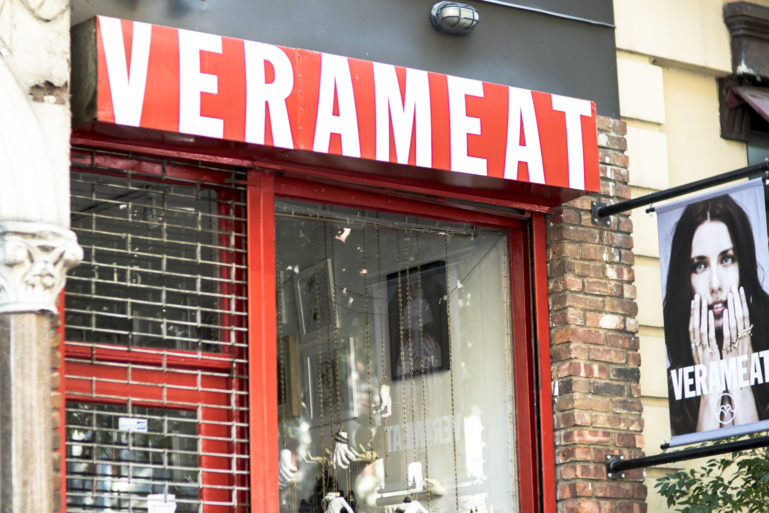
How to Write a Retail Business Plan in 7 Easy Steps
Having a retail business plan is imperative if you plan on running a successful retail business.
Because competition is fierce in retail, and because there are so many directions you could take your business (online, brick-and-mortar, pop-up store), you need a plan that not only outlines what you want to achieve with your business, but also one that includes guidelines for how you’ll achieve your goals.
Here are seven simple steps to developing your retail business plan.
1. Know Why You’re Writing Your Business Plan
This may seem like an odd statement, but it’s essential that you know the purpose of your business plan, as your answer will shape how you develop it. Are you just looking to gather your thoughts into a document so that you can focus on your business strategy? If so, a one-page business plan might suffice. You’ll likely need nothing more than a sketch of what you want your business to look like, the products you sell, and a bit about your marketing strategy.
However, if you’re seeking financing for your business, you’ll need an entirely different business plan — one that’s detailed and has plenty of information on sales projections and financials that potential lenders or investors can use to make a decision about giving you a loan.
If you are planning to apply for a business loan, check what the requirements are in terms of credit score and business history. It’s sometimes difficult for first-time business owners to be approved without a history of sales or business success. Having a business plan can be the kick in the pants you need to get your credit score and finances in order, which will make your business more appealing to lenders.
2. Give Some Background on Your Retail Company
Who is your business? How long have you been in operation? Whether you have yet to launch or have been in business a while, this is where you define who your company is, as well as explain your business goals. Don’t worry about employees and products just yet; they will have their own section in your retail business plan.
It’s also important to address what business structure your business will operate under. Be aware that investors tend to want to work with incorporated businesses over sole proprietorships because there is less legal risk for them. It may be worth it to incorporate to be more appealing as an investment.
SEE ALSO: 4 Benefits of Incorporating Your Business
3. Provide Insight on Your Market
If you are seeking funding, you’ll need to prove you know the retail industry inside and out. This is where detailed retail market research comes into play. You’ll need to dive deep into your specific niche in retail and look at who your competitors are, how big the market is, and who your customers are.
Avoid the mistake of simply defining the retail industry as a whole; if you sell handcrafted dog clothes, you shouldn’t be lumped in with businesses who sell inexpensive trendy clothes for teens. Drilling down to your specific niche will show investors that there are people who want to buy your product. Kudos to you if the market is relatively small but demand is high!

4. Explain Your Products
Now you’ll need to cover, in depth, what you plan to sell. Will you create products or order them from suppliers? Who are those suppliers, and what do they charge? Discuss payment terms, whether you can get credit from your vendors, and shipping and delivery costs. What system will you use to manage inventory, and how often will you order it?
Look at profit margin. Investors will want to see somewhere between 25 and 50 percent. What will you charge for each product, and how does that compare to what competitors charge for similar items?
5. Assess Personnel Needs
If you’re already operating your retail business, here you’ll discuss your leadership team, as well as the staff you currently employ. If you’re in the planning stages for your retail business, forecast what your personnel needs will be. Keep in mind that while you can work the cash register for your retail business, you’re better off working on admin tasks and strategy, while hiring someone else to handle customers.
Take time to determine your hiring process. Will you post jobs online or just a “help wanted” poster in your store? What’s your training process? It’s important that you properly train new staff, not only so they are empowered to do a good job, but also to minimize employee turnover. Since retail, as you may know, has one of the highest employee turnover rates of all industries.
SEE ALSO: 5 Employee Management Techniques for Improving Productivity
6. Address Marketing
Another important component of your business plan is defining how you will market your business to new customers and retain old ones. More research will help you understand where your target market is spending time online, and will guide you in deciding which marketing channels will be the most effective at reaching them. Your research may show you that your market, which consists of 18 to 25-year-old women, spends significant time on Instagram, but very little on email or Facebook. Clearly, you should put your effort into using the channels they frequent rather than those they don’t.
In your marketing section, create a budget that assigns a dollar amount to each marketing task. There will be costs involved in marketing your business, including software subscriptions, paying for an employee or marketing firm to manage social media, design fees, and advertising. Break the budget down by quarter and by marketing channel, then include it in the next section for your overall budget.

7. Give Your Financial Plan
This section will be of the utmost importance if you’re applying for a loan or looking to bring on investors. If you’ve been in business awhile, provide data on past sales. If you aren’t yet operating, create sales forecasts for the first three years.
Something every investor or bank will want to see is your business budget. Don’t rush through this section, because you’ll need to cover every inevitability in terms of business expenses in your budget, from inventory to rent and insurance to your own salary.
Even if you haven’t started selling products yet, it’s a good idea to include what your prices will be once you launch. Prices are, especially for retail, the key to your profit margins, and to making investors happy.
How do you calculate your pricing? You’ll need to include four numbers:
- Business Cost: What you’ll spend on payroll, inventory, and overhead annually.
- Your Salary: It’s important to bake this in!
- Estimated Number of Yearly Sales: Make an educated guess if you don’t have sales history to help you determine the average markup for your profit margin.
- Average Cost Per Inventory Item: Your products might range in price, but taking an average gives you an idea of what sort of profit you can pad around that cost.
Also include a break-even analysis that shows how much you will need to make each month to cover your expenses, as well as projected cash flow, projected profit and loss, and balance sheet. These are all the essential documents that investors or banks will use to assess how risky your business is, as well as how fast you would be able to pay back a loan.
Extras
If you have additional data that is useful in your business plan, you can include it in your plan’s appendix. These extra items might include:
- Additional financial data
- Market research
- Contracts in place
- Credit history
- Licenses and permits
- Packaging design
- Resumes for your leadership team
A retail business plan is a solid foundation for the success of your company, whether you plan to take out a loan or not. It helps you see clearly what your business looks like and how it’s positioned in your industry. If you do seek funding, your business plan will serve as proof that you and your company are a worthwhile investment.
Want to try ShopKeep for yourself?
Just answer a few easy questions.
Need help finding the right point of sale?
Just complete the form. We’ll call you right back to explain how ShopKeep can work for you.
Hit the ground running.Sprinting, in fact!
Read our free, comprehensive guide, Small Business 101, to learn all you need to know about starting a thriving business.

